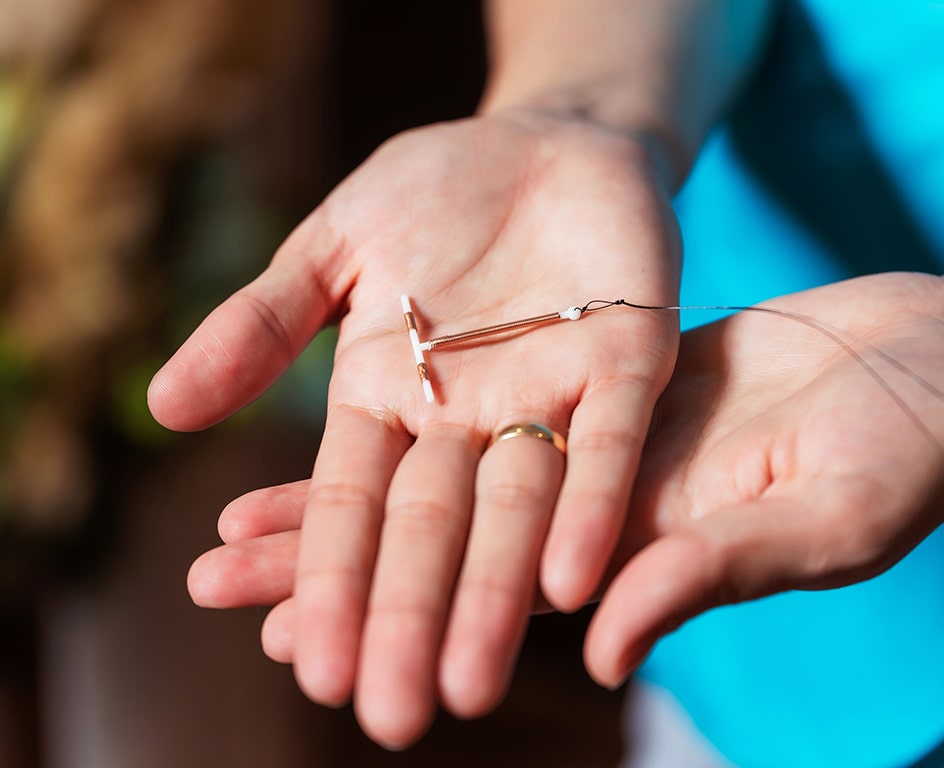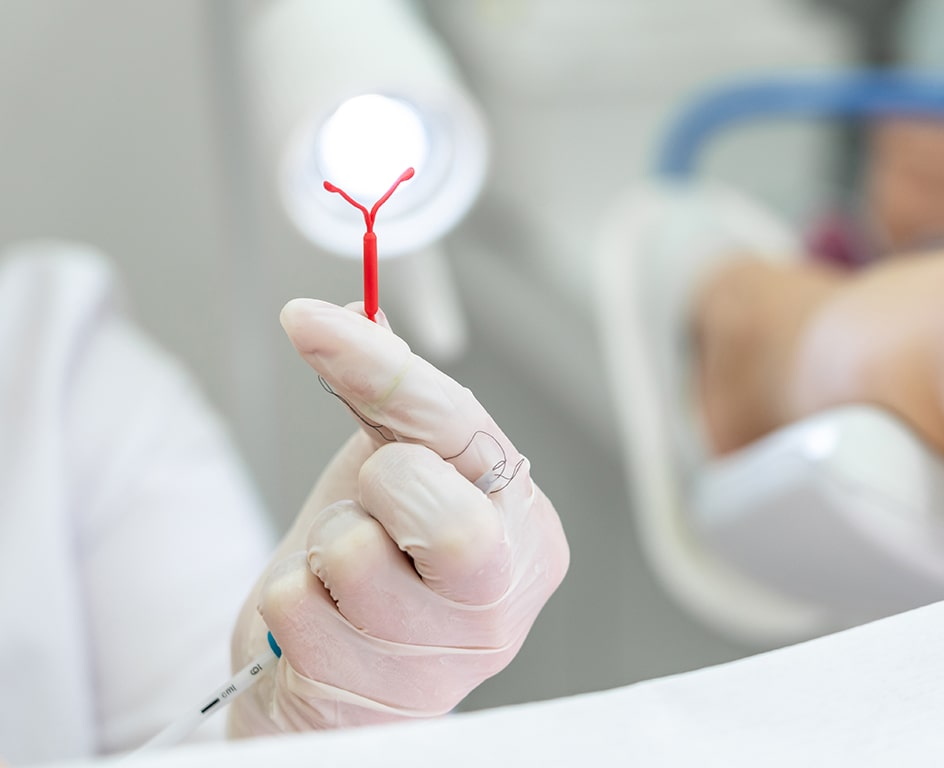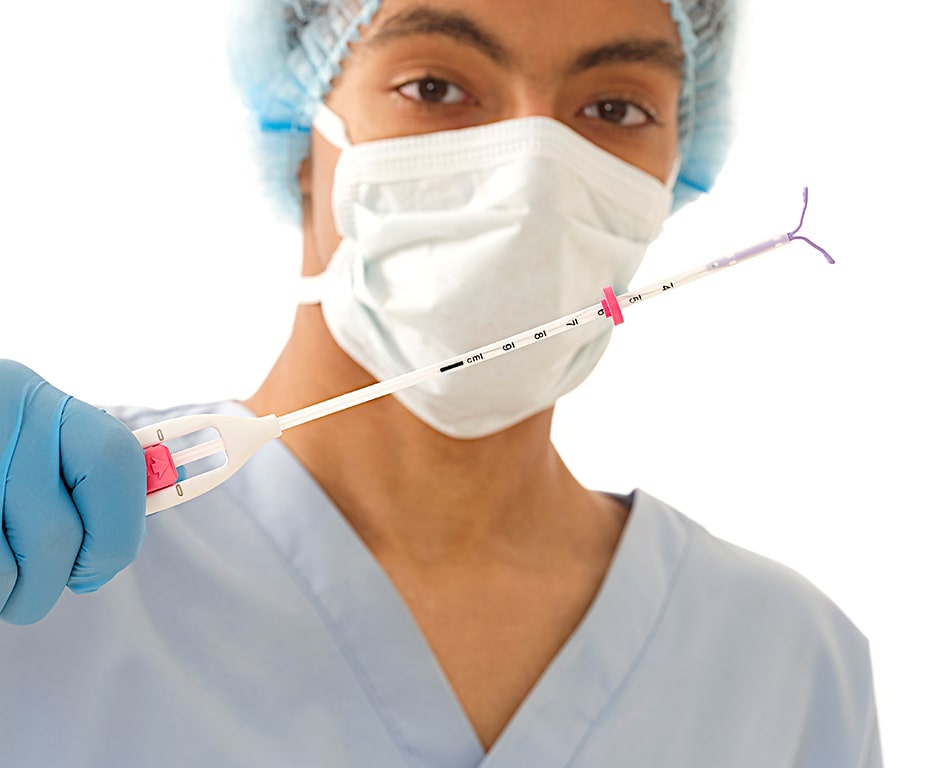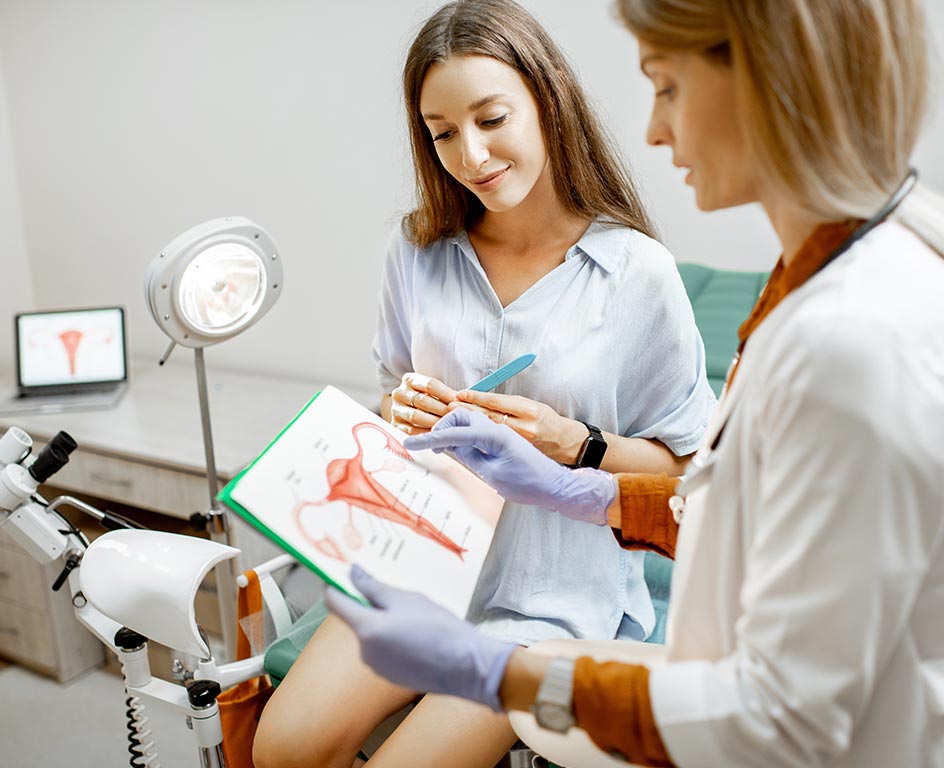Located at 20 Old Brompton Road – Just Steps from ![]() South Kensington Tube. Easy Access, Always.
South Kensington Tube. Easy Access, Always.
When you use an intrauterine device (IUD) as a form of contraception, you may need to replace or remove the device at some point. For most women, the IUD removal procedure is the same as its insertion.
An intrauterine device or IUD is a small T-shaped medical device inserted into the womb or uterus to prevent pregnancy. An IUD can be hormonal or copper.
IUDs, sometimes called a coil, are considered the most effective reversible contraceptive, with fewer than one in 100 women who use it getting pregnant in a year.

The copper IUD also has a T-shape. It has two copper sleeves and a stem coated with copper wire. The sleeves and stem release copper into the uterus for up to ten years to prevent the sperm from fertilising the egg or ovum.
This T-formed medical device contains a hormone. Several hormonal IUDs are available, but we have the Mirena coil, which provides the longest protection. It has a lifespan of five years and releases progestin in the uterus to protect against pregnancy.
Progestin thickens the cervical mucus, hindering the sperm from getting to the egg for fertilisation. The hormone also prevents the release of the egg and reduces the uterine lining to stop implantation.

You can remove an IUD whenever you want. Most people remove an IUD for the following reasons.
Usually, IUD removal is painless and quick when done by an experienced specialist. There may be no need for hysteroscopy except if the IUD remained in the uterus after menopause for several decades.

After placing an IUD, you are protected against pregnancy for 3 – 10 years. The IUD’s lifespan depends on whether it is copper or hormonal. The hormonal IUD can last 3 – 5 years, while the copper IUD lasts 5 – 10 years.
As a general health routine, women using the IUD need to check it is still in place every month. The strings will hand into the vagina if the coil is properly fitted. You can check if the coil is in place by feeling the strings. You should feel only the strings and not the IUD itself.
Ensure you contact your specialist if
After inserting the copper IUD, you may have heavier periods and menstrual cramping, which are normal. Most women have a regular cycle within a few months.

Our gynaecologist can remove your IUD and insert a new one at the same appointment. You can get the device at any point in your cycle, but the insertion is easier at the latter part of your cycle when the cervix is more elastic and softer. Removing a coil is a comfortable and easy procedure that usually occurs without complications.

In a few cases, problems occur during the IUD removal.
There is a slight possibility of incomplete IUD expulsion. This may occur if the gynaecologist can’t locate the IUD strings, which can happen if you cut the string too short during the insertion. The specialist may need to use an ultrasound to find the strings, and you need additional instruments to release it from the uterus, such as an IUD hook or cytobrush.
This rarely occurs, but when it does, the IUD moves into the uterine wall, which requires a hysterectomy procedure, possibly under anaesthesia.
Our consultant gynaecologists have the facilities and expertise to carefully remove and fit your IUD. You shouldn’t worry about the insertion or removal procedure because we also have specially designed gynaecology couches to help with the removal and insertion process, even for those who aren’t anatomically regular.
You can schedule the coil fitting appointment without a referral from another specialist, and we also provide same-day appointments. You can consult our specialist for advice and full support if you have complications or problems.
Our consultant gynaecologists provide coil removal services, and the prices include your consultation and consumables. The total coil removal cost is £400.
For your private coil removal Kensington, visit GP London or call 020 70434317 to book an appointment at our clinic.
